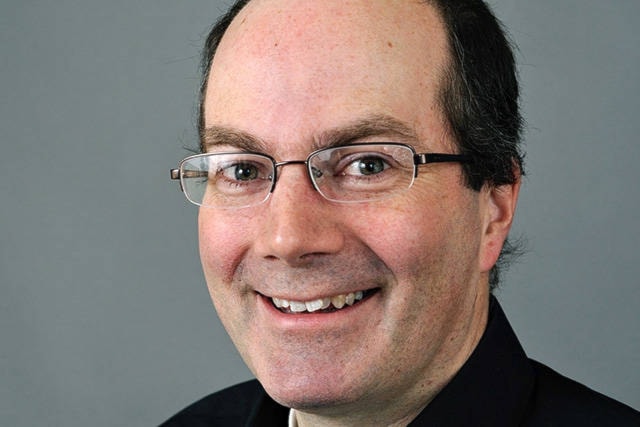The debate in Alaska over health-care reform is a vivid reminder how fortunate we Yukoners are to enjoy such generous financial support from our federal government.
The total annual Yukon government budget for health services, continuing care and Yukon hospitals totalled $337 million in the latest budget. That’s $8,799 per Yukoner per year.
Most of that money comes from Ottawa. The Yukon government’s own taxes and general revenue are estimated to be just $150 million this fiscal year, or less than half our health budget alone. To put it another way, if the Yukon government shut down all its other departments on January 1 and used all its own revenue to pay for our health care, the budget would run out on June 11.
During his election campaign, President Trump promised to reform President Obama’s signature public health care law, known as Obamacare. Republicans in the House and Senate campaigned hard against Obamacare, and are working on bills to replace it.
In case you didn’t spend a year in Alaskan high school participating in civics class, or see that old Schoolhouse Rock number called “I’m just a bill,” the House and Senate will both pass versions of the law, reconcile them, and then send the final version to be signed (or vetoed) by the president.
The problem for our Alaskan friends, 51 per cent of whom voted for Trump, is that Obamacare’s incredibly detailed and complicated provisions included a raft of subsidies for rural America. This is a big deal, since the cost of delivering health care can be much higher in isolated areas.
Data journalists at the Washington Post have put together an online tool that shows how Americans in different age groups, income levels and states will be affected by the proposals. In many cases, Alaska is among the states hardest hit.
The House proposal was finalized on May 4 and is expected to result in a premium increase of, for example, about US$15,000 for low-income Alaskans.
The equivalent figure for the Senate bill, which has a different set of subsidy formulas, is US$4,000 (The Senate draft was released earlier this week, and may change when or if it is finally adopted).
Separate analysis by the Center for Budget and Policy Priorities, reported in the Alaska Dispatch News, indicates that a “60-year-old making an income that is 300 per cent of the poverty line — US$45,000 a year in Alaska — would see his premiums rise, after tax credits, by US$5,777 in Alaska.”
Furthermore, Alaska used Obamacare money to expand Medicaid coverage to those just above the poverty line. Given Alaska’s oil-price induced fiscal crisis, the state will have some tough decisions to make when this federal funding is no longer available.
The nub of the problem is that Republican proposals in both the House and Senate make major cuts to health spending and, as the Post describes it, use “the savings to fund a substantial tax cut for the health-care industry and wealthier Americans.”
Assuming the some version of these bills is eventually signed by President Trump, many Alaskans face major health-care sticker shock.
Since the increases are so big, many Alaskans are likely to go without health care or choose options with significantly less coverage. Many Canadians will be shocked to hear about insurance plans that do not cover things considered routine here, such as maternity coverage, mental health support and addiction services.
The Congressional Budget Office, a non-partisan agency in Washington that scores legislative proposals, estimates that the Senate bill would result in 22 million more uninsured Americans compared to Obamacare. Many Alaskans will be among them.
All of this puts Alaska’s all-Republican Congressional delegation in a bind. The Republican Party is putting strong pressure on its members to support the replacement of Obamacare, yet the negative impacts are likely to be severe in the state.
Senator Lisa Murkowski won the last election with 44 percent of the vote, a smaller figure than Trump. Her name is often mentioned when people talk about Republican senators who may not support the Senate bill. Republican leaders in the Senate have little margin of error, with only 52 Republicans in the 100-seat chamber.
If the Republicans succeed in replacing Obamacare with a much less generous model, there will be big consequences in Alaska. Some Yukoners might predict an end to routine Republican victories in federal elections, and hope that more Democrats on the Alaska Congressional delegation might help with issues such as drilling in the Arctic National Wildlife Refuge and the cross-border Porcupine caribou herd.
We shall see. Alaskan political dynamics don’t always work the way Yukoners might think. Remember that Sarah Palin grew up in Skagway and is said to have regularly visited Whitehorse for health care. The experience didn’t stop her from describing public health care as follows during the Obamacare debate in 2009:
“The America I know and love is not one in which my parents or my baby with Down Syndrome will have to stand in front of Obama’s ‘death panel’ so his bureaucrats can decide, based on a subjective judgment of their ‘level of productivity in society.’ “
In any case, the differences between the Alaskan and Yukon models for running a modern northern society look likely to remain as big as ever. Low taxes, a big energy industry and mostly private health care on one side of the 141st meridian, and the opposite on the other.
Keith Halliday is a Yukon economist and author of the MacBride Museum’s Aurore of the Yukon series of historical children’s adventure novels. He is a Ma Murray award-winner for best columnist.
